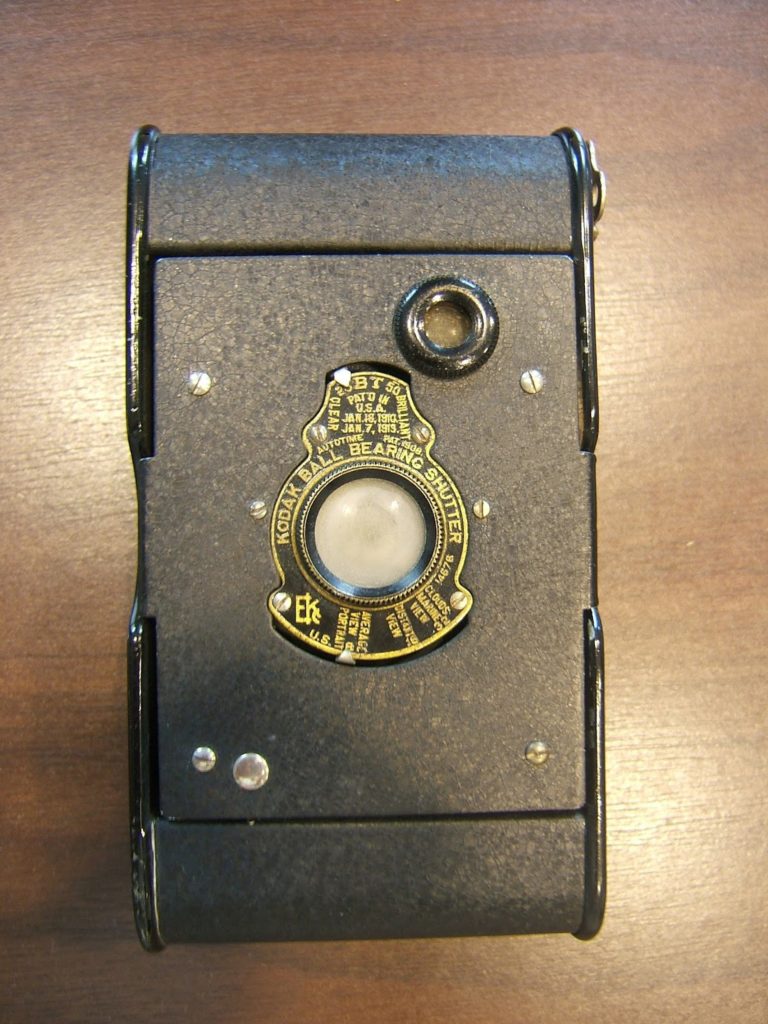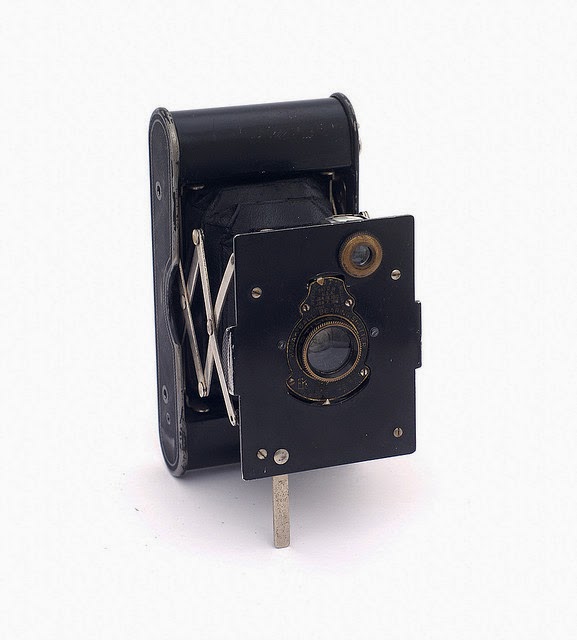The rise of the cellphone means that most of us now carry a camera in our pocket just about everywhere we go. Marianne Moore also had a pocket camera: a Vest Pocket Kodak, measuring 4 ¾” x 2 ½” by 1″, which is about the size of a modern smartphone, although a bit thicker.
 |
| Kodak Vest Pocket Autographic Camera. 1915. 2006.4133.2. Rosenbach of the Free Library of Philadelphia. |
taking; this image is of a similar camera in its open state.
 |
Vest Pocket Autographic Kodak Camera. Photo by Steve Harwood. Creative Commons
CC-BY-NC 2.0 |
The camera offered several aperture settings, which could be selected via the slider at the bottom: 8 (equivalent to f-stop 11) for “Average View / Portrait”; 16 (f-stop 16) for “Distant View” and 32 (f-stop 22) for “Marine View/Clouds.” The camera is an autographic model, which means that a small door on the back of the camera can be opened to allow the user to write titles on the borders between the film negatives.
Vest pocket Kodaks were made between 1912 and 1926, with the autographic version being introduced in 1915. They proved especially popular with soldiers in the First World War. Kodak even marketed them to soldiers, claiming that it would help soldiers stay close to their families and going on to note that “Tens of thousands of brave lads in the camps and trenches of France are keeping their own Kodak story of the war—a story that will always be intense to them because it is history from their viewpoint.” This British snapshot was probably taken with a vest pocket Kodak.
 |
| The Royal Photographic Society Collection © National Media Museum, Bradford / SSPL. Creative Commons BY-NC-SA |
Vest pocket Kodaks not only went to war, but they also went to Everest. In 1924 British climber George Mallory and his companion Andrew Irvine died on Everest. It has never been proven if they actually reached the summit, but Irvine was apparently carrying a vest pocket camera. Although Mallory’s body was found in 1999, Irvine’s body and his camera are still missing. If found, the camera could settle the question of whether the pair managed to summit.
Marianne Moore’s camera never went to war or to Everest, but it did go on vacation. The camera was a present from Moore’s friends Bryher and H.D. in 1921 and many of Moore’s snapshots now in our collection owe their existence to this pint size camera.

Kathy Haas is the Associate Curator at The Rosenbach of the Free Library of Philadelphia and the primary poster at the Rosen-blog.
